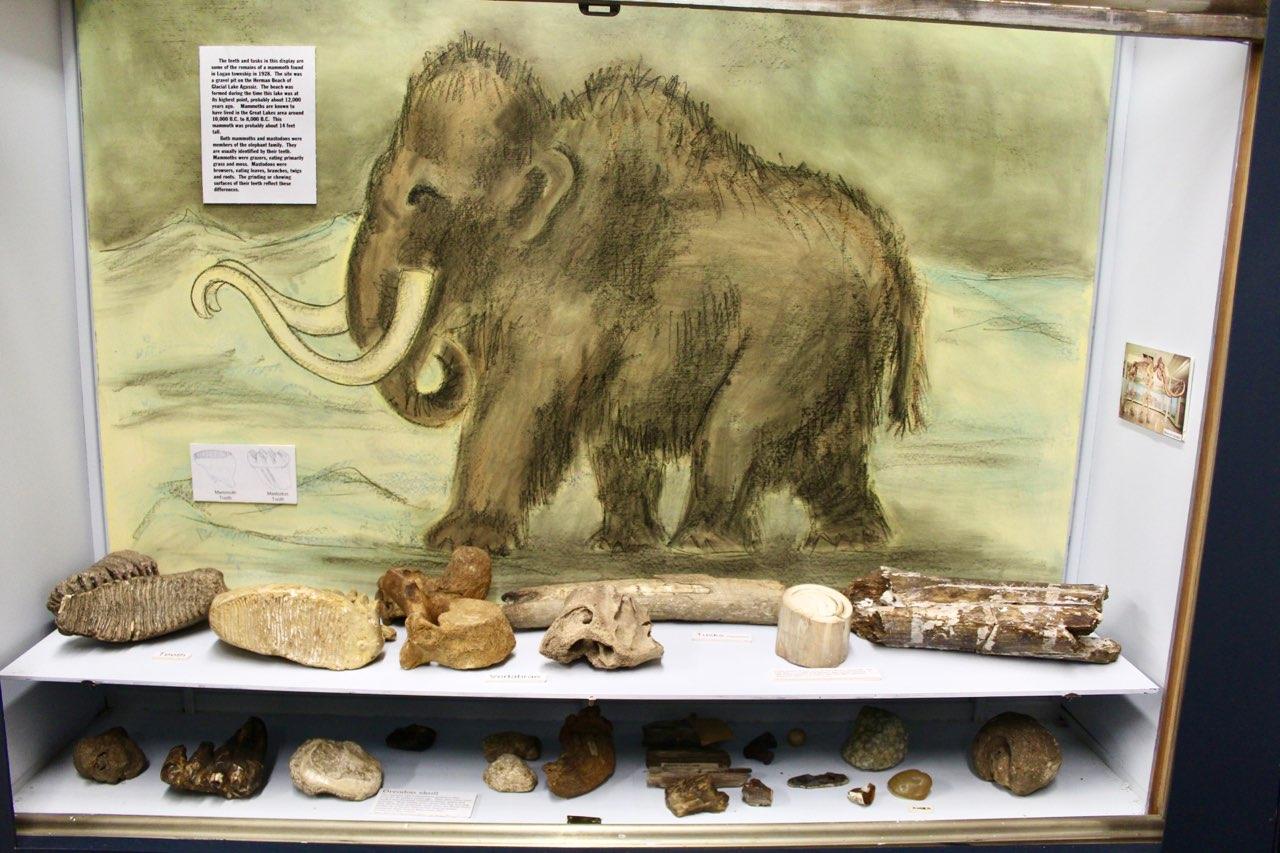

 In the Museum, there is a tooth and a few bones of a mammoth found in a gravel pit just west of Herman, MN. More than just curiosities, they are a window on the prehistory and the forces that shaped the landscape of Grant County.
In the Museum, there is a tooth and a few bones of a mammoth found in a gravel pit just west of Herman, MN. More than just curiosities, they are a window on the prehistory and the forces that shaped the landscape of Grant County.
The eastern part of the county has lakes and hills that are the result of moraine deposited by glaciers, while the western part is on the flat lakebed of mighty glacial Lake Agassiz. Fourteen thousand years ago, Herman would have been on the southern shoreline of Lake Agassiz as it drained south and east through the glacial River Warren. Bigstone Lake, Lake Traverse, and the Minnesota River lie in the bottom of the great old river channel.
Wave action piled up beach ridges of sand and gravel along the shoreline when the lake level was stables. The very distinct beach ridge at the highest level of Lake Agassiz was named “Herman Beach”, which can be traced north for hundreds of miles on each side of the old lake (there is also a less noticeable “Norcross Beach” to the north). Herman Beach is easily seen on State Highway 9 at the Herman Airport where it bisects the runway. Although not good farmland, beach ridges were often chosen as building suites, being elevated above the surrounding terrain and well drained. They also were convenient sources of gravel for roads.
In 1928, a gravel pit on the beach ridge was being worked in Section 15 of Logan Township two miles west of Herman. Mechanical scrapers were being used to take the gravel to the conveyor for loading on trucks. On Saturday August 11, two mammoth teeth and a few bones were found. The discovery was fortuitous, as they were noticed by a workman in a pile of oversize rock removed by grates as the gravel was loaded. Examination of the area where the gravel had been removed showed dark spots that may have outlined where the body had lain. More bone fragments were found, but they had been scattered by the scrapers.
The time when the mammoth died was approximately 14,000 years ago when the Herman Beach ridge it was found in formed. Burial in the gravel must have occurred fairly rapidly because the teeth and bone fragments were not extensively scattered. It is not known whether the animal died at the site, or if the body was carried by wave action or ice to the shore.
Mammoths were about the size of a modern elephant. They were grazers, eating primarily grass and moss. The similar appearing mastodons were browsers, eating leaves, twigs, branches, and roots. The grinding or chewing surfaces of the teeth reflect these differences and allows distinguishing between the two. The tooth identified the remains as being those of a mammoth.
Tis a pity that the mammoth became extinct. It would have been a sight indeed for the early settlers to have seen a herd of the great beasts grazing on the open prairie.
By Don McCollor 3.17.22
Photo by Tom Grout
SOURCES:
Grant County Herald August 16, 1928 “Two Teeth Twelve Inches Wide Found in Gravel Pit”
Grant County Historical Society Archives. Description of prehistoric artifacts on display.
US Geological Survey Map of Herman Quadrangle, Minnesota, 7.5 minute series 2019.
The Upper Beaches and Deltas of the Glacial Lake Agassiz, Upham, Warren, US Geological Survey, Bulletin of the US Geological Survey No. 39, 1887.
John P. Bluemle

